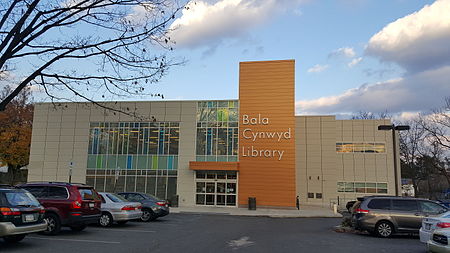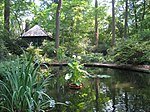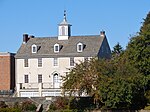Lower Merion Library System
AC with 0 elementsEducation in Montgomery County, PennsylvaniaLower Merion Township, PennsylvaniaPublic libraries in Pennsylvania

The Lower Merion Library System (LMLS) is the public library system of the township of Lower Merion, in Pennsylvania. It is among the largest public library systems in Pennsylvania. While Lower Merion accounts for 7% of the population of Montgomery County, it accounts for 20% of its library circulation. The library is ranked in the top 2% of public libraries for circulation per capita.
Excerpt from the Wikipedia article Lower Merion Library System (License: CC BY-SA 3.0, Authors, Images).Lower Merion Library System
North Highland Avenue, Lower Merion Township
Geographical coordinates (GPS) Address Nearby Places Show on map
Geographical coordinates (GPS)
| Latitude | Longitude |
|---|---|
| N 40.001728 ° | E -75.239069 ° |
Address
Bala Cynwyd Library
North Highland Avenue
19066 Lower Merion Township
Pennsylvania, United States
Open on Google Maps








